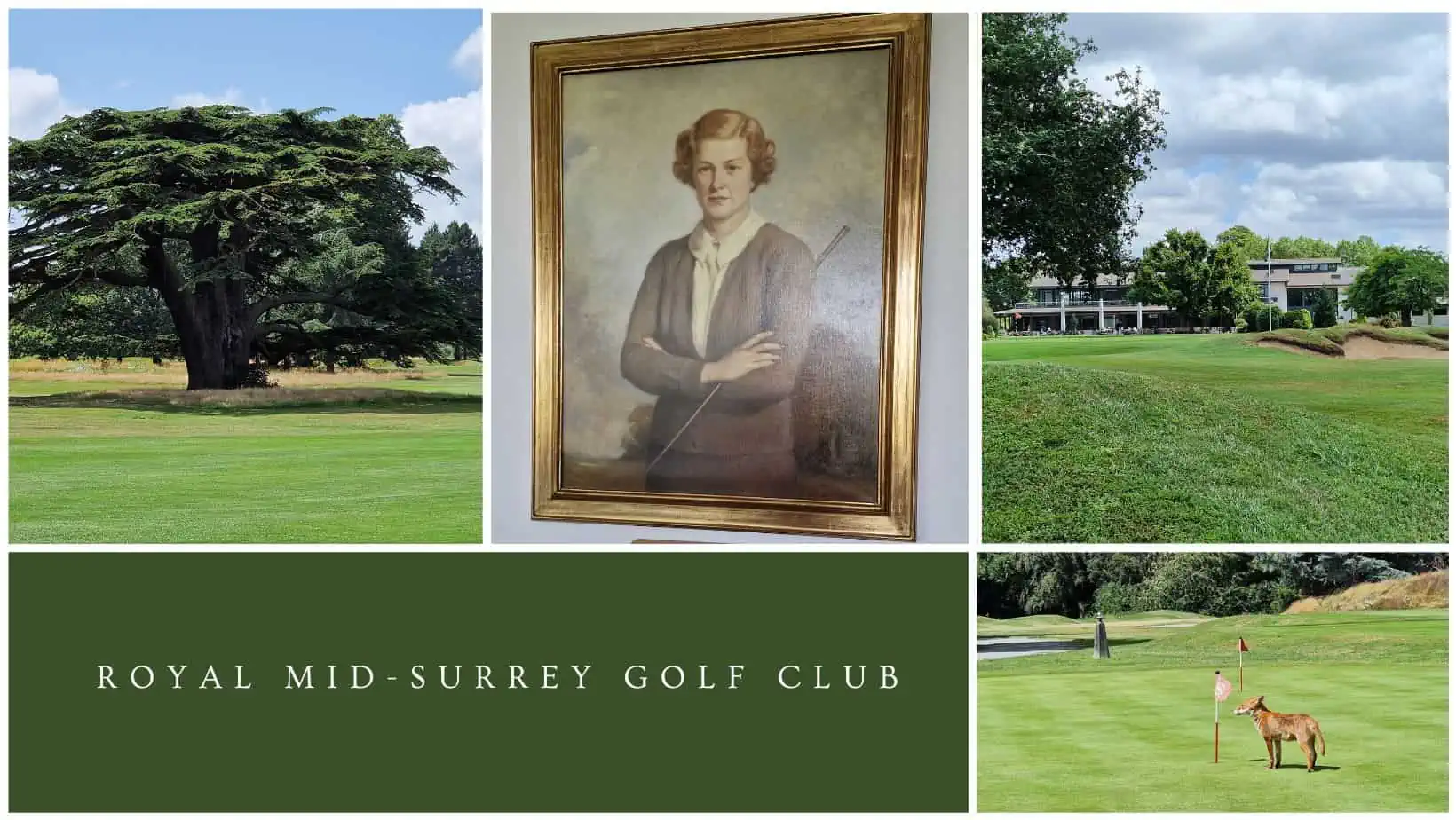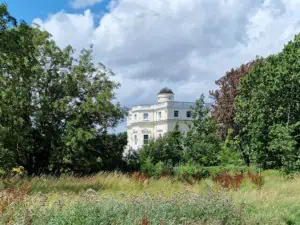Royal Mid-Surrey GC: History meets innovation
Richmond is London center. Cars, buses, houses. Kew Gardens and Old Deer Park are the green lungs here – and the Royal Mid-Surrey Golf Club, whose entrance is slightly hidden next to a sports complex. Here, history meets innovation from the very first moment of the visit. The club has been around on the Thames since 1892, but this is not a classic case of an old boys’ club, as golf critics in England like to denounce.
Green energy and safeguarding the future of water
In front of the clubhouse, you park your e-vehicle at one of the six e-charging stations. You spot the solar system on the clubhouse roof – and a little later from the golf course on the observatory that King George III had built here in 1769 to observe the stars. The Royal Mid-Surrey Golf Club is located on royal land, has a lease on the two golf courses. Anyone who draws the conclusion from the addition of “Royal” that the golf club is backward-looking is mistaken.
In terms of sustainability, the club with its two 18-hole courses is in many respects one of the pioneers in England. “We’ve integrated the issue into the heart of the club,” explains Mark Gailey, General Manager, briefly, referring to his colleague’s commitment. Claire Silva, Sustainability Lead at Royal Mid-Surrey Golf Club, likes her job, “because I feel I can make a difference.”
Women have played an important role in this club since the beginning. Royal Mid-Surrey has always been a mixed club and today represents the largest female membership in England, making up 26 percent of the membership. The fact that the club is one of the signatories of the Women in Golf Charter of the R&A is only logical in this respect. Pam Barton, after whom one of the two courses is named, won the British and U.S Amateur Championship in 1936. Equality for women in golf is part of the history of this club.
In this respect, there are other sustainability issues that the club is currently prioritizing. In recent months, the company has committed itself to developing a strategy for the future and has defined its focus topics. Water management is the most crucial point. “We expect regulations on water withdrawals to tighten and possibly water prices to change,” Silva notes. Designing a water concept for the courses, which on the one hand has to manage with less rain, but on the other hand is also located in the flood plain of the Thames, is not easy. How members will accept a browner look to the fairways in the long run – Silva doesn’t know yet.
Sustainability projects can sometimes be uncomfortable – and so at Royal Mid- Surrey, like so many other golf clubs, they struggle to convince golfers that species-rich rough makes sense. About 50 percent of the courses, which are GEO certified, are kept as natural as possible. Despite the overall scarcity of land, rough areas have been carefully expanded in recent years. The problem here is not a bit different from any other golf club in the world: not all of the members are excited about more rough.
Farewell to plastic
And this despite the fact that the issue of sustainability is explicitly supported here by the membership, which is now also involved in a sustainability committee and has been committed to the conversion to a virtually plastic-free operation. There are so many different sustainability projects: outside in front of the clubhouse grow the herbs that are used in the club kitchen and in the vases you will find flowers from the club’s own garden. Suppliers have already been optimized with a view to regional purchasing, and at least all hand tools for the greenkeepers have already been converted to electric operation.
“Overall, we have now really become a very sustainable club,” Silva sums up with satisfaction, also referring to the annual sustainability report that is part of the reporting at the annual general meeting. “You can’t do everything at once anyway,” is her realistic outlook for the next few years. She wants to focus more on the topic of circular economy and waste, and the topic of water will be central to investments anyway. “Above all, we need to establish water security,” she says.
They are new goals for a very old club. The fact that this is so attractive to the modern golfer after more than 130 years of existence that a waiting list for new members is still in place may be because they have always thought sustainably here.








